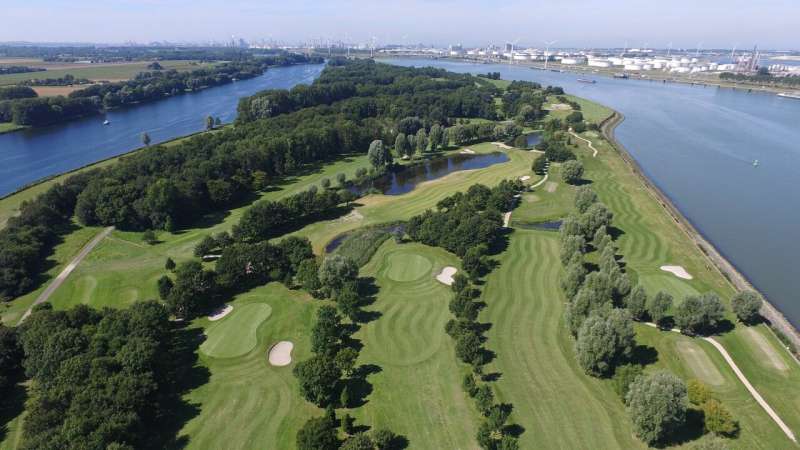Golf courses can be safe havens for wildlife and beacons of biodiversity

Golf courses are sometimes seen as harmful to the environment. According to the popular notion, the grass soaks up too much water, is cut too short and sprayed with dangerous chemicals. But in reality, golf courses can act as safe havens for native wildlife, especially in cities.
Cities are home to a wide range of plants and animals, including . But ongoing population growth and urban development threatens this biodiversity. We're still and , leaving less habitat and resources for native birds, bats, possums, lizards, frogs, beetles and butterflies.
This is where golf courses can play a role. Australia is one of the golfing capitals of the world, with . These courses represent large, continuous green spaces often with native vegetation, mature trees, lakes and wetlands. Given their ubiquity, golf courses could help conserve urban biodiversity.
This week, the annual tournament returns to Grange Golf Club in South Australia. Grange is known for its to . So what makes a golf course good or bad for biodiversity?
The gold in the rough
From a biodiversity perspective, the most valuable part of a golf course is the area all golfers seek to avoid: the "rough." These spaces between the green, manicured fairways can include remnant or restored bushland with dense leaf litter, long grass, thick shrubs, and both living and dead trees. This vegetation is often native and features a diversity of plant species.
Collectively, this can provide a range of resources for native wildlife including food, shelter and tree hollows for nesting. In Melbourne, research found for wildlife than nearby suburban streets and parklands. They were also home to a .
Golf courses also have . Golfers are only allowed on the course during certain hours of the day. Courses usually do not allow dogs. And there are few cars and roads, so there's less noise and light pollution than in other urban areas. This makes golf courses pretty attractive to native animals looking for somewhere to live.
Many golf courses are heavily irrigated to ensure high-quality playing surfaces. This ample water supply (typically from recycled sources) is fantastic for wildlife, especially in . Birds are known to flock to water resources during drought—a behavior likely to become more common under future climate change.
Much-feared water hazards for golfers, such as lakes and ponds, actually provide valuable habitat for aquatic birds, frogs, fish and insects. These water bodies are particularly important in cities where to make way for new houses, shops and roads.
Importantly, once constructed, golf courses are rarely threatened by clearing or development. In Perth, research found as development spread through surrounding suburbs. The mere existence of a golf course can help secure a home for native species for many decades to come.
Golf courses are not a perfect solution
However, not all land on golf courses is valuable for wildlife. Large open areas such as fairways typically only such as the aggressive noisy miner.
Golf courses can also harbor pests such as cane toads, rats and common mynas. These undesirable species may pose a threat to native biodiversity.
The can affect soil quality, contaminate water sources, and make frogs sick.
Frequent lawn mowing can , particularly among bugs, bees, wasps and ants. This is likely to have flow-on effects for animals that feed on insects, and for flowering plants that depend on insects for pollination and seed dispersal.
Some urban golf courses may also be , making it hard for wildlife to safely move around to find food, water and a mate. To get in and out, animals may need to cross busy roads or move through dangerous areas where they are exposed to predators such as cats and foxes.
So, how can we best manage golf courses for biodiversity?
In an ideal world, golf courses should only be constructed in developed areas. That's because constructing courses in natural, undisturbed areas is likely to involve clearing vegetation for fairways, greens, car parks and club houses.
As a result, the biodiversity value of a golf course .
Existing golf courses can help protect biodiversity by retaining and restoring diverse bushland patches in the rough. Important conservation areas can also be fenced off and deemed "out of bounds" to golfers.
The use of harsh chemicals should be reduced to minimize risks to soil, water and wildlife. "" overseas are already making progress in this space, but they are far from mainstream.
Finally, efforts must be made to connect golf courses to nearby parks and reserves through wildlife corridors, road underpasses, and special crossing structures such as rope bridges. This will enable animals to safely move around the urban landscape.
Many golf courses now have and are working hard to make their practices more sustainable. In other cases, disused golf courses are even being converted into conservation reserves, such as the in Elsternwick, Melbourne.
While golf courses cannot replace natural habitats, they can provide a useful alternative for many species that call our cities home.
Provided by The Conversation
This article is republished from under a Creative Commons license. Read the .![]()



















